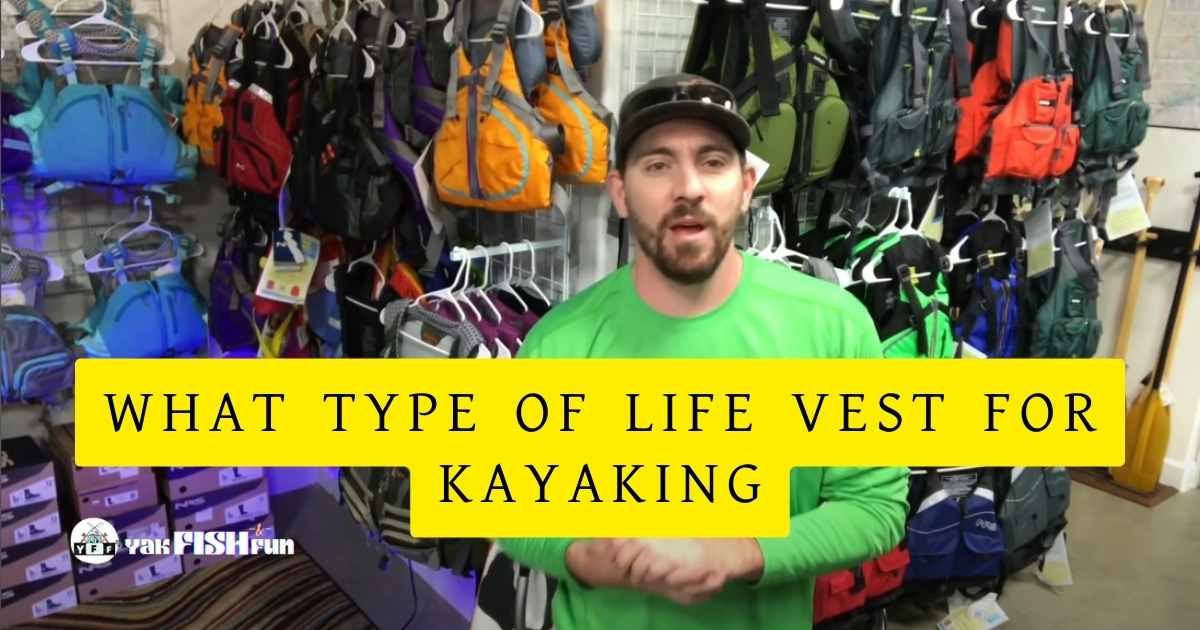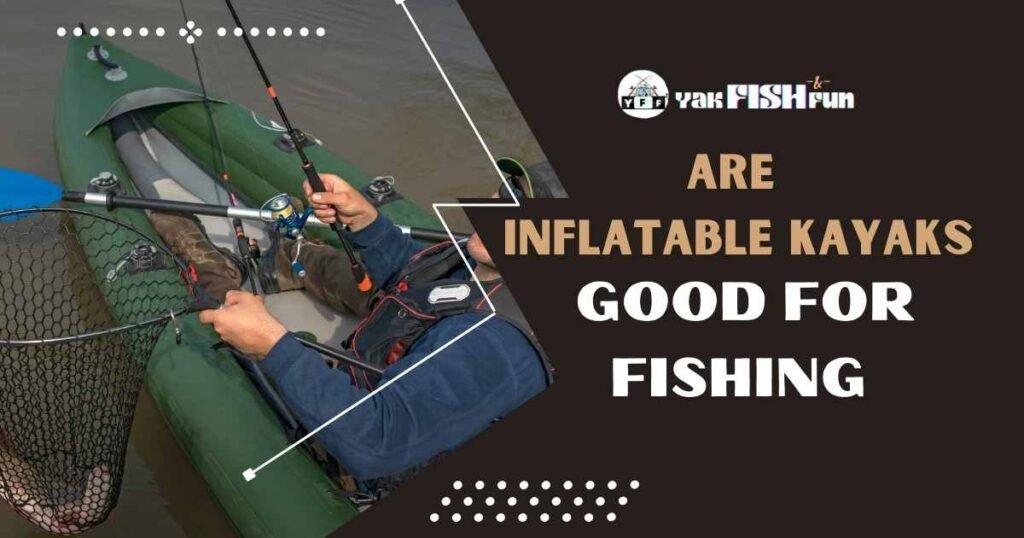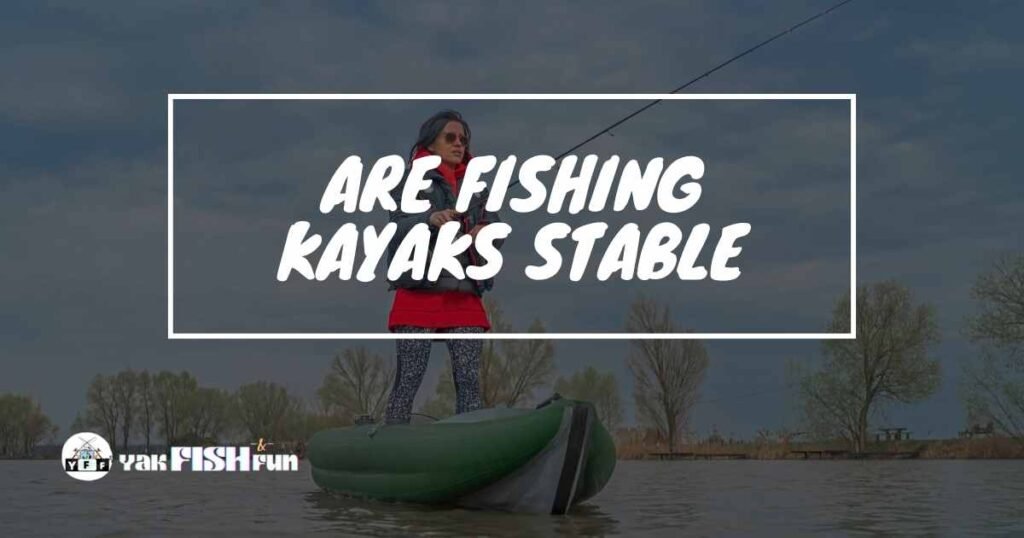the water. With various types of life vests available, each designed for specific activities and conditions, it’s important to choose one that best suits your kayaking style and needs.
But what type of life vest is best for kayaking? For kayaking, use a Type III or Type V life vest. These vests offer flexibility and freedom of movement.
Type III life vests are ideal for calm waters and provide buoyancy with ease of movement. Type V vests are specialized for specific water activities and can include features like extra pockets or a rescue harness. And make sure the vest fits snugly and is Coast Guard-approved.
In this guide, we’ll explore the different types of life vests for kayaking, their key features, and how to choose the one that aligns with your paddling activities.
Table of Contents

Importance Of Life Vests For Kayaking
Kayaking is an exciting adventure that blends physical activity with nature exploration. The importance of life vests for kayaking cannot be overstated. A life vest, also known as a Personal Flotation Device (PFD), is essential for every kayaker. It ensures safety and compliance with legal requirements, making your kayaking experience both enjoyable and secure.
- Prevents Drowning: A life vest keeps you afloat if you capsize or fall into the water.
- Visibility: Bright-colored vests make you visible to other boaters and rescuers.
- Buoyancy: High-quality vests provide buoyancy, helping you stay above water.
Different types of life vests cater to various needs:
| Type | Description | Best For |
| Type I | Offshore Life Jackets | Open water, rough seas |
| Type II | Near-shore Buoyant Vests | Calm, inland waters |
| Type III | Flotation Aids | Water sports, kayaking |
Type III vests are the best for kayaking. They offer comfort, mobility, and adequate buoyancy. Always choose a vest that fits well. An ill-fitting vest can be as dangerous as not wearing one at all.
Legal Requirements
Wearing a life vest is not just about safety; it’s also about following the law. Kayaking laws vary by region, but most places have strict regulations on life vest usage.
Key legal requirements for life vests:
- Mandatory for All Ages: Most regions require everyone, regardless of age, to wear a life vest.
- Type Approval: Life vests must meet specific standards set by authorities like the U.S. Coast Guard.
- Accessible Storage: If not worn, life vests must be easily accessible on the kayak.
Here is an example of legal requirements for kayaking in the USA:
| Requirement | Description |
| Age | Children under 13 must wear a life vest at all times. |
| Type | Must be a U.S. Coast Guard-approved Type I, II, or III vest. |
| Condition | Vests must be in good, serviceable condition. |
Ignoring these laws can result in fines and jeopardize your safety. Always check local regulations before heading out. Following these rules ensures a safe and legal kayaking experience.
Choosing The Right Type Of Life Vest For Kayaking
Kayaking is a thrilling adventure, but safety should always come first. A life vest is essential gear for every kayaker. Choosing the right type of life vest can make your kayaking experience safer and more enjoyable. Let’s dive into the key aspects of selecting the perfect life vest for your needs.
Here’s what you need to know:
- Types: PFDs are classified into five types by the U.S. Coast Guard. Each type has a specific purpose and level of buoyancy.
- Material: Most PFDs are made from durable, lightweight materials like nylon or neoprene. These materials offer comfort and flexibility.
- Buoyancy: The buoyancy rating is crucial. It indicates how much weight the PFD can support in water. Higher buoyancy ratings mean more floatation support.
A PFD should fit snugly and provide enough buoyancy to keep you afloat. Remember, the primary purpose of a PFD is to ensure your safety on the water.
Different Types Of Pfds
There are several types of PFDs designed for different activities and water conditions. Here’s a quick overview:
- Type I: Offshore Life Jackets. These provide the most buoyancy and are designed for rough or remote waters where rescue may take time.
- Type II: Near-Shore Vests. Suitable for calm waters where quick rescue is likely. These are less bulky than Type I.
- Type III: Flotation Aids. Ideal for kayaking and other water sports. They offer comfort and freedom of movement.
- Type IV: Throwable Devices. These are not worn but thrown to a person in the water. Examples include cushions and ring buoys.
- Type V: Special-Use Devices. Designed for specific activities like kayaking or windsurfing. These must be worn to meet legal requirements.
Each type serves a different purpose. For kayaking, Types III and V are the most suitable due to their design and functionality.
Factors To Consider
When choosing a life vest for kayaking, several factors come into play:
- Activity: Consider the type of kayaking you’ll be doing. Recreational, touring, and whitewater kayaking may require different PFDs.
- Fit: A proper fit is essential for comfort and safety. The PFD should fit snugly without being too tight.
- Mobility: Look for a design that allows free movement of your arms and torso.
- Features: Some PFDs come with additional features like pockets, D-rings, and reflective strips.
- Material: Choose materials that are durable, lightweight, and comfortable.
Considering these factors ensures you select a PFD that enhances your safety and enjoyment on the water.
Proper Fit
A proper fit is vital for any life vest. Here’s how to ensure your PFD fits correctly:
- Adjustability: Most PFDs have adjustable straps on the shoulders, sides, and waist. Adjust these to achieve a snug fit.
- Chest Size: Measure your chest size and choose a PFD that matches your measurements.
- Comfort: Ensure the PFD is comfortable to wear. It shouldn’t rub or chafe your skin.
Here’s a simple table to help you with sizing:
| Chest Size (inches) | PFD Size |
| 28-32 | Small |
| 32-36 | Medium |
| 36-40 | Large |
| 40-44 | X-Large |
| 44-48 | XX-Large |
Finally, test your PFD in water. It should keep your head above water and allow you to move freely. A well-fitted PFD can make your kayaking experience safer and more enjoyable.
Inflatable Vs. Non-inflatable Life Vests
Choosing the right life vest for kayaking is crucial for your safety and comfort. Among the various options, the debate between inflatable vs. non-inflatable life vests stands out. Each type has its own advantages and disadvantages, making it important to understand which one suits your kayaking needs best.
Pros And Cons Of Inflatable Life Vests
Inflatable life vests offer a modern solution for kayakers. These vests are designed to stay deflated until needed, making them very compact and less restrictive.
- Pros:
- Lightweight: Inflatable vests are lighter than non-inflatable ones.
- Comfort: They offer more freedom of movement.
- Compact: Easy to store when not in use.
- High Buoyancy: Once inflated, they provide excellent buoyancy.
- Cons:
- Manual Inflation: Needs to be inflated manually or automatically.
- Maintenance: Requires regular checks for leaks and operational readiness.
- Not Always Ready: Must be inflated before providing buoyancy.
- Cost: Generally more expensive than non-inflatable vests.
Pros And Cons Of Non-inflatable Life Vests
Non-inflatable life vests are a traditional and reliable choice for kayakers. These vests are always buoyant and require less maintenance.
- Pros:
- Always Ready: Provides instant buoyancy without any need for inflation.
- Durable: Made from robust materials that withstand wear and tear.
- Low Maintenance: Requires minimal upkeep compared to inflatable vests.
- Cost-Effective: Generally cheaper than inflatable options.
- Cons:
- Bulky: Can be cumbersome and restrict movement.
- Heavy: Weighs more than inflatable vests.
- Storage: Takes up more space when not in use.
- Less Comfortable: Can cause discomfort during long kayaking trips.
Which One To Choose
Deciding between inflatable and non-inflatable life vests depends on your specific kayaking needs and preferences.
Consider these factors:
- Activity Type: For calm waters, an inflatable vest is ideal. For rough waters, a non-inflatable vest provides consistent buoyancy.
- Comfort: If comfort and freedom of movement are top priorities, opt for an inflatable vest.
- Maintenance: If you prefer low-maintenance gear, a non-inflatable vest is a better choice.
- Budget: For budget-conscious kayakers, non-inflatable vests offer a cost-effective solution.
Ultimately, both types of life vests have their unique benefits and drawbacks. Choose the one that aligns best with your kayaking activities and personal comfort.
Specialized Life Vests For Kayaking
When kayaking, safety should be your top priority. Choosing the right life vest is crucial. Specialized life vests for kayaking cater to different types of kayaking activities. Each type offers unique features and benefits that enhance your experience on the water.
Kayak Fishing Life Vests
Kayak fishing life vests are designed with anglers in mind. These vests come with multiple pockets and attachments. They help you keep essential gear within easy reach.
Some key features include:
- Rod holders for hands-free fishing
- Multiple pockets for storing tackle and tools
- Comfortable fit for extended periods on the water
- High-back design to accommodate kayak seats
Here’s a table highlighting some popular options:
| Brand | Model | Key Features |
| NRS | Chinook | High-back, multiple pockets, rod holder |
| Stohlquist | Fisherman | High-back, tool pockets, durable |
| Onyx | Kayak Fishing | Comfortable fit, gear pockets, safety whistle |
Whitewater Kayaking Life Vests
Whitewater kayaking life vests are built for rough waters. They offer extra buoyancy and secure fit. These vests ensure you stay afloat in turbulent conditions.
Notable features include:
- High buoyancy for rough conditions
- Snug fit to prevent slipping
- Rescue harness for emergency situations
- Durable materials to withstand impacts
The top choices in this category are:
| Brand | Model | Key Features |
| Astral | GreenJacket | Rescue harness, high buoyancy, durable |
| NRS | Zoya | Snug fit, women-specific, high buoyancy |
| Stohlquist | Edge | Comfortable, durable, versatile |
Touring Kayaking Life Vests
Touring kayaking life vests are ideal for long-distance paddlers. These vests prioritize comfort and mobility. They are designed to reduce fatigue over extended trips.
Key features include:
- Lightweight design for comfort
- Ventilation panels to keep you cool
- Adjustable straps for a custom fit
- Pockets for storing snacks and small items
Here are some popular touring vests:
| Brand | Model | Key Features |
| MTI | Java | Comfortable, ventilated, multiple pockets |
| Stohlquist | Escape | Lightweight, adjustable, high-back |
| Kokatat | Bahia Tour | Breathable, durable, multiple storage options |
Features To Consider When Choosing A Life Vest For Kayaking
Choosing the right life vest for kayaking is crucial for safety and enjoyment on the water. Kayakers need life vests that provide both protection and comfort. Understanding the key features to look for can make a big difference in your kayaking experience. Here are the essential features to consider when selecting a life vest for kayaking.
Buoyancy
Buoyancy is the ability of the life vest to keep you afloat. It is a critical factor in ensuring your safety. Life vests come in different buoyancy ratings, measured in pounds. For kayaking, a buoyancy rating between 15.5 to 22 pounds is usually sufficient.
Consider the following when evaluating buoyancy:
- Weight: Heavier individuals may require higher buoyancy.
- Water Conditions: Calm waters need less buoyancy compared to rough waters.
- Type of Kayaking: Whitewater kayaking needs more buoyancy for added safety.
Here is a simple table to help you understand the buoyancy needs:
| Weight | Recommended Buoyancy |
| Up to 150 lbs | 15.5 lbs |
| 150 – 200 lbs | 16.5 – 20 lbs |
| 200+ lbs | 22 lbs |
Visibility
Visibility is another important feature for kayaking life vests. High visibility ensures that you are easily seen in the water, which is crucial for rescue operations. Life vests designed for kayaking often come in bright colors like orange, yellow, and red.
Consider these points for visibility:
- Reflective Strips: These enhance visibility in low light conditions.
- Bright Colors: Choose colors that stand out against the water and natural surroundings.
- Whistles or Signals: Some vests come with built-in whistles for signaling.
Visibility is not just for daytime. Reflective materials make you visible during night kayaking. This is essential for avoiding accidents and ensuring your safety.
Comfort And Mobility
Comfort and mobility are vital for an enjoyable kayaking experience. A life vest should not restrict your movements. It should fit well without causing discomfort.
Key features for comfort and mobility:
- Adjustable Straps: Ensure a snug fit to your body.
- Lightweight Materials: Reduce fatigue during long kayaking sessions.
- Design: Look for vests with large armholes for better movement.
Here are some comfort aspects to consider:
- Padding: Soft padding in the right places can reduce chafing.
- Breathability: Mesh panels improve ventilation, keeping you cool.
- Fit: A well-fitted life vest feels like a second skin.
Comfort and mobility directly affect your paddling efficiency. An uncomfortable vest can ruin your kayaking adventure. Always try on the vest and adjust the straps to ensure it fits perfectly.
Storage And Pockets
Storage and pockets add convenience to your kayaking life vest. They allow you to carry essential items like snacks, maps, and safety gear.
Look for the following storage features:
- Multiple Pockets: Different sizes for various items.
- Secure Closures: Zippers or Velcro to keep items secure.
- D-Rings: For attaching tools or small gear.
Storage and pockets can make your kayaking trip more enjoyable. Having easy access to your essentials means you can focus more on paddling and less on looking for things. Always check the placement of pockets to ensure they don’t interfere with your paddling.
What Type Of Life Vest Is Required For Kayaking?
A Type III or V life vest is required for kayaking. These vests ensure safety and provide freedom of movement. Make sure it fits snugly and is Coast Guard-approved.
What Is The Difference Between A Kayak Pfd And A Regular Life Vest?
A kayak PFD offers better mobility and comfort for paddling. Regular life vests are bulkier and designed for general water safety.
Bottom Line
In summary, picking the right life vest for kayaking is crucial for your safety, comfort, and enjoyment. By knowing the different types of life vests and their features, you can choose one that suits your kayaking style and conditions. Whether you’re kayaking for fun, tackling whitewater, or fishing, a good life vest will improve your experience and give you peace of mind. Look for a vest that fits well, provides enough buoyancy, and has the features you need. With the right life vest, you can enjoy your time on the water knowing you’re protected and ready for anything.


